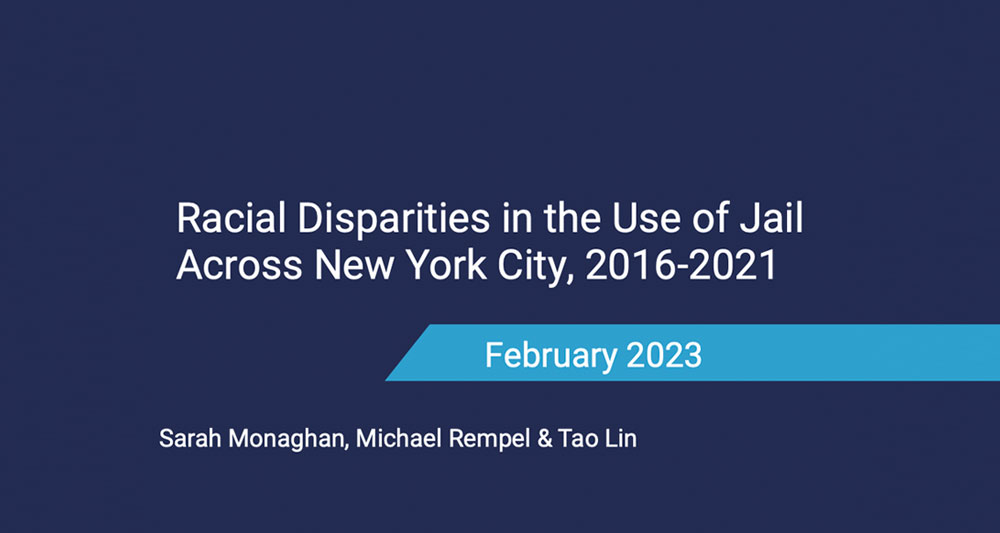
John Jay College’s Data Collaborative for Justice finds Black people were incarcerated 11.6 times more than white people in 2021
Recent policy reforms aimed at reducing the disproportionate representation of Black and Brown people in New York City jails have failed to meet that goal. In fact, it’s getting worse, according to a new Data Collaborative for Justice at John Jay College report which found widening racial disparities from 2016 to 2021. Black and Brown people are disproportionately represented in New York City jail admissions, making up almost 90% of admissions, despite only comprising 52% of the the City’s general population. They are especially overrepresented among people held on parole violations and before trial due to an inability to pay bail.
Black people were incarcerated in the City’s jails at a rate 11.6 times higher than white people in 2021, a jump from 2016 when the rate was 4.8 times more. The incarceration rate for Hispanic people was 4.7 times higher than white people, up from 4.2 in 2016.
“There is no way to sugarcoat this report’s findings. They’re disheartening,” said Michael Rempel, Director, Data Collaborative for Justice. “The reality that Black New Yorkers are disproportionately incarcerated citywide and in virtually every one of the City’s individual neighborhoods underscores a level of structural racism that needs to be comprehensively addressed. Certainly, this does not mean criminal legal system leaders should hopelessly wait on others in lieu of prioritizing doable, data-driven steps within their purview.”
“This new report highlights the reality that despite recent steps forward in improving New York’s criminal legal system and reducing our overreliance on incarceration, the City continues to fall behind on ensuring that the system is improved for all New Yorkers,” said Olive Lu, Associate Director of Research, Data Collaborative for Justice. “While jail incarceration on the whole is declining thanks in part to legislation such as Less Is More, our data shows that much more needs to be done to address the glaring racial disparities that persist in NYC jails.”
Besides examining citywide racial/ethnic disparities in NYC jail admissions, the analysis breaks down cases by year (2016-2021), borough, reason for incarceration, length of stay, bail, mental health status, charge severity and type, and neighborhood. The findings, although unsurprising, indicate the racial disparities that plague NYC’s criminal legal system are more evident than ever.
Accompanying this report are a set of interactive maps, which present a visual demonstration of racial disparities within each NYC neighborhood.
Based on mapping both the general population and 2021 jail admissions among people residing in individual NYC zip codes, the data points to dual pernicious patterns of concentrated incarceration in predominantly Black and Brown neighborhoods and disparate incarceration of Black New Yorkers wherever they live (no matter the zip code).
Key Findings
- A widening Black-White gap in the incarceration rate
- In 2021, Black (57%) and Hispanic (30%) people made up almost 90% of New York City’s over 16,000 jail admissions, despite only comprising 52% of the overall population of NYC.
- The jail incarceration rate per 100,000 residents was 4.8 times higher for Black than white people in 2016 and grew to 11.6 times higher by 2021. Over the same period, the jail incarceration rate grew from 4.2 to 4.7 times higher for Hispanic than white people.
- Disparities in jail admissions in every borough
- Manhattan incarceration rates showed the most startling contrast; in 2016, Black people were jailed at a rate 23.0 times that of white people, which increased to 29.5 in 2021. In Queens, which saw the smallest disparity of the five boroughs, Black people were still jailed at a rate 8.4 times higher than white people in 2021.
- High parole violation disparities & rising racial disparities in pretrial admissions
- Representing 22% of the 2021 general population, Black people comprised just over 60% of 2021 jail admissions on parole violations and 58% of admissions due to an inability to pay bail.
- Jail incarceration concentrated in mostly black and brown neighborhoods (also, Black people are disproportionately incarcerated no matter where they live)
- Of the 178 NYC zip codes, 40 (23%) accounted for a vastly disproportionate share (60%) of 2021 jail admissions (largely concentrated in Central Brooklyn and the Bronx).
- In 163 (92%) of all 178 NYC zip codes, a higher percentage of Black people were admitted to jail than live in the given zip code. Illustrating the pattern of within-neighborhood disparities, in zip code 10025 on the Upper West Side (the only majority white neighborhood among those in the top 40 zip codes for jail admissions), Black people made up 69% of 2021 jail admissions, despite only comprising 9% of the population, whereas white people made up just 2% of admissions, despite comprising 51% of the population.
About John Jay College of Criminal Justice
An international leader in educating for justice, John Jay College of Criminal Justice of the City University of New York is a Hispanic Serving Institution and Minority Serving Institution offering a rich liberal arts and professional studies curriculum to 15,000 undergraduate and graduate students from more than 135 nations. John Jay is home to faculty and research centers at the forefront of advancing criminal and social justice reform. In teaching, scholarship and research, the College engages the theme of justice and explores fundamental human desires for fairness, equality and the rule of law. For more information, visit www.jjay.cuny.edu.
The Data Collaborative for Justice (DCJ) leads critical research about frequent interactions between community members and the criminal legal system and aims to ensure that communities, and the governments that serve them, have the necessary information to develop and implement evidence-based policies, practices, and programs. DCJ’s work has informed policy reforms, facilitated partnerships between researchers and government agencies across the country, spurred new scholarly research on lower-level enforcement, and been cited extensively in the press. More information about the Data Collaborative for Justice’s work is available at: www.datacollaborativeforjustice.org.
This analysis and report was generously supported by funding from Trinity Church Wall Street.



